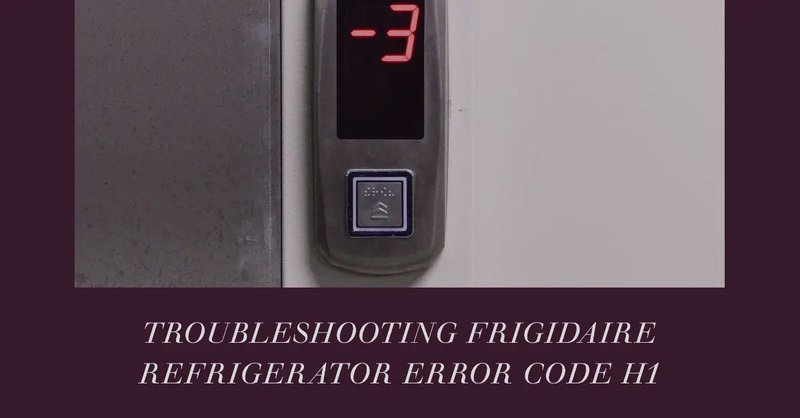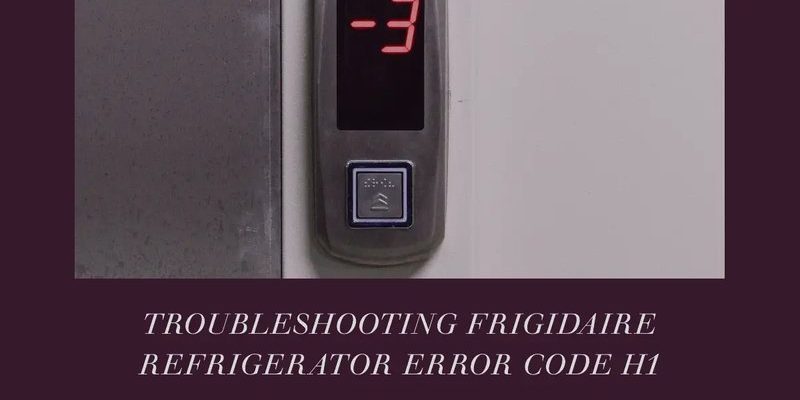
An error code is like your appliance’s way of letting you know something’s not quite right. Think of it like a check engine light in your car. For Frigidaire ovens and ranges, Error Code F2 generally indicates a temperature issue. It could be the oven is getting too hot, or maybe it thinks it’s hotter than it actually is. Either way, it’s your oven’s way of waving a little red flag to grab your attention. In some cases, this might be something you can fix yourself. Other times, you’ll need to call in a professional.
Understanding Error Code F2 on Frigidaire Ovens
When you see Error Code F2, it usually relates to a problem with the oven’s temperature controls. Imagine your oven as a team working to cook your food perfectly. The error code suggests there’s a team member who isn’t doing their job properly. This is often tied to the temperature sensor or the electronic control board. If the sensor is faulty, it might send false messages about the oven’s temperature. It’s like your thermometer insisting it’s a sunny 75°F outside in the middle of a snowstorm.
Sometimes, this error can also be caused by a jammed button on the control panel. A jammed button can create a misunderstanding between you and the oven, much like a sticky “Caps Lock” button on your keyboard turning your calm messages into SHOUTS! If you’ve noticed any other odd behavior from the buttons, this could be a clue.
In some scenarios, the issue can be as simple as a temporary glitch. Just like your computer sometimes needs a good restart, unplugging your oven for a few minutes might clear the error. If this doesn’t solve the problem, it’s time to consider other possibilities.
When to Try Fixing It Yourself
Before you grab the phone to call a technician, there are a few steps you can try on your own. First, check if the oven is actually hotter than it should be. Pay close attention to whether it’s consistently overheating. A well-functioning oven should maintain the set temperature, just like a thermostat keeping your home cozy.
If you suspect a jammed button, gently press all the buttons on the control panel. Make sure none are stuck or unresponsive. This is a simple check that might save you time and hassle. Another idea is to reset the oven by unplugging it for about five minutes and then plugging it back in. This can sometimes clear temporary glitches, like rebooting your Wi-Fi router when it’s acting up.
However, if these steps don’t work, or if you notice any burning smells or strange noises—like the sound of a rattling blender—it might be time to call a pro. Continuing to use an oven that’s not functioning correctly could be risky, and safety should always come first.
When to Call a Technician
So, when should you wave the white flag and call in the experts? If you’ve tried the basic troubleshooting steps and the Error Code F2 remains as stubborn as ever, it’s a good sign that professional help is needed. Technicians have the expertise to diagnose deeper issues that might not be immediately obvious. Remember, it’s always better to be safe than sorry, especially when dealing with appliances that involve heat and electricity.
Another sign to call a technician is if you’re noticing other problems with your oven. Is it taking longer than usual to heat up, or does it seem cooler than it should be? These could be hints that the temperature sensor or control board needs a closer look. A technician can replace faulty components and ensure everything is functioning as it should.
Finally, consider calling a technician if the error code frequently reappears even after resets. Persistent problems might indicate underlying issues that require a professional’s touch. Much like a persistent toothache that won’t go away with a simple home remedy, some issues need expert care.
Preventative Tips to Avoid Future Error Codes
Preventing Error Code F2 from popping up in the future involves a bit of proactive care. Regular maintenance can go a long way in keeping your oven in top shape. Just like you’d take your car for regular oil changes, your oven benefits from occasional attention. Cleaning the oven regularly can prevent the build-up of grease and grime, which can affect its performance.
Also, consider placing an oven thermometer inside to ensure the temperature is accurate. This is like having a second opinion in case your oven’s own “thermometer” isn’t being honest. If the temperatures don’t match, it might be a good time to call a technician before a full-blown error occurs.
Lastly, use your oven’s self-cleaning feature judiciously. While it can be a handy tool, overuse might place strain on components and lead to issues, including error codes. Like everything else, moderation is key.
By keeping these tips in mind and knowing when to call a professional, you can enjoy a worry-free cooking experience. Remember, reaching out to a technician when needed ensures your oven remains a helpful ally in your kitchen adventures.
